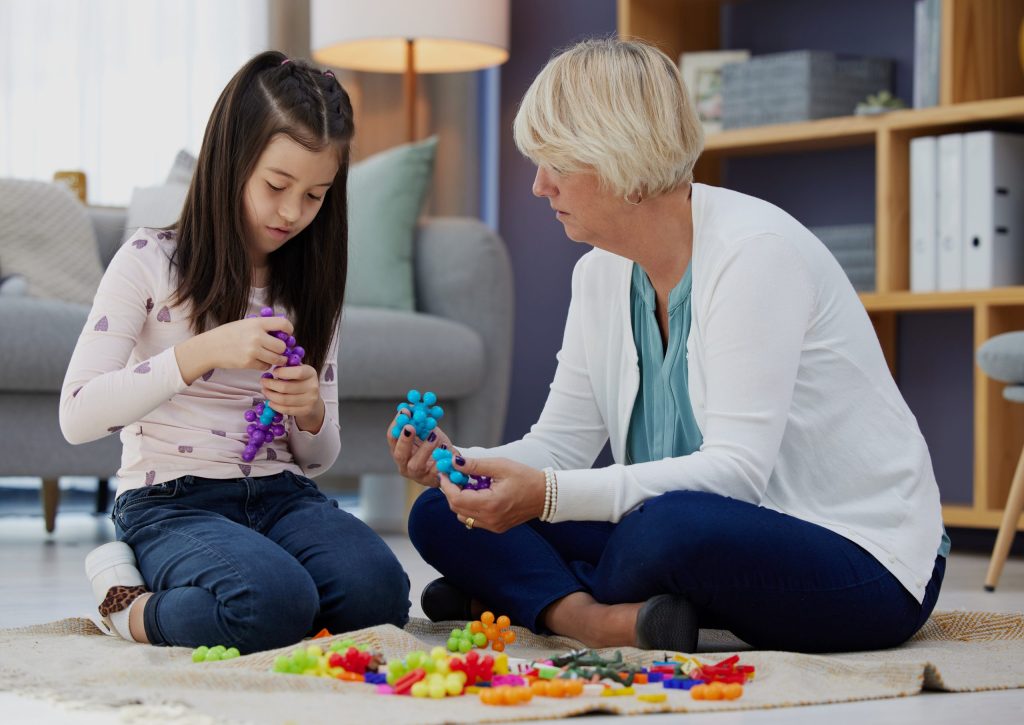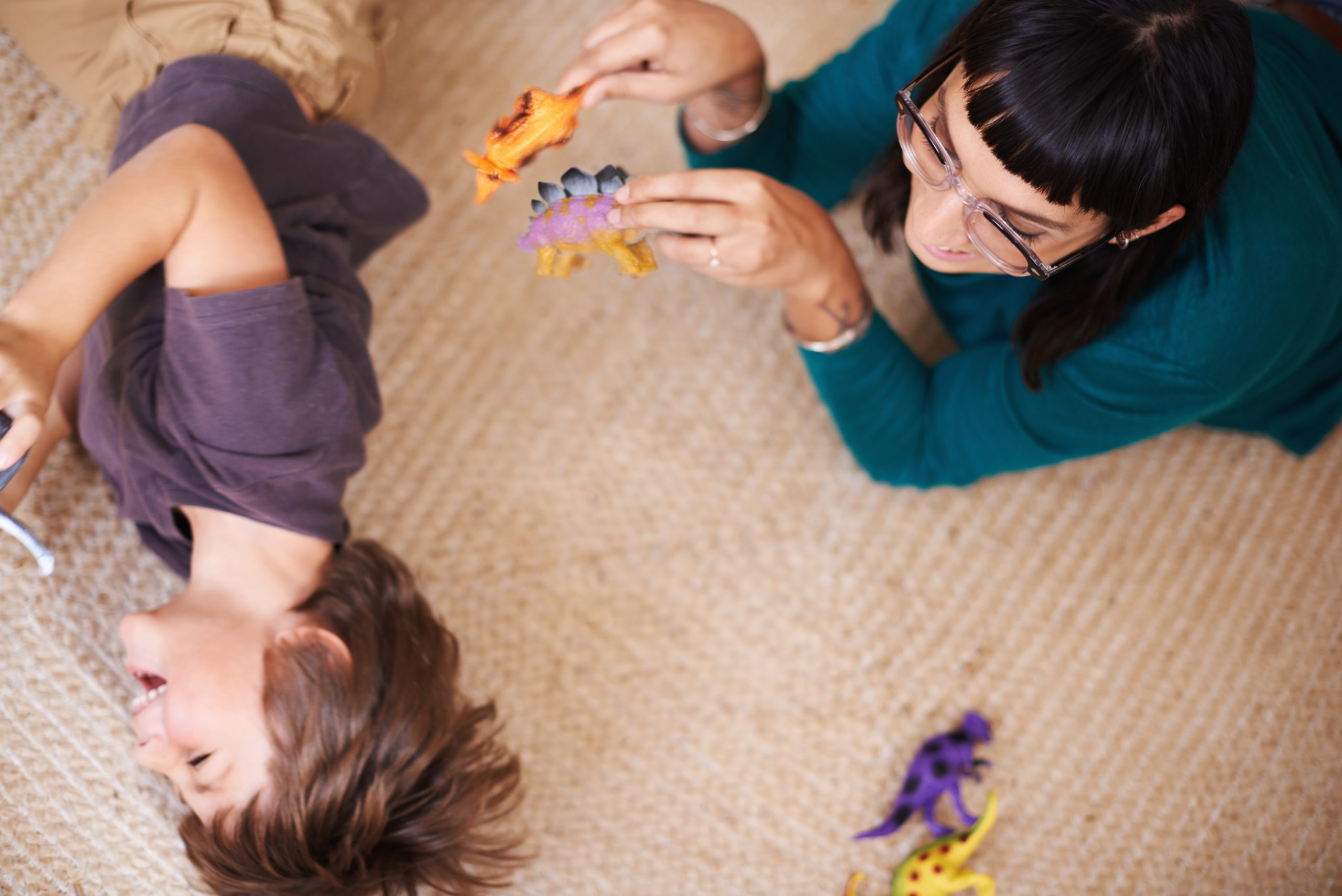Children and adolescents do not always have the words to describe what they are feeling inside. Play therapy is a specialized form of counseling that uses toys, games, art, and imaginative activities to help young people express emotions, process experiences, and build coping skills in a safe environment.
Play is considered a child’s natural medium for expression and communication, making it an ideal tool for therapy. A child’s play is their primary language, allowing them to reveal inner thoughts, feelings, and social skills.
Through play, children can communicate emotions and experiences that may be too difficult to verbalize.
At Lifeline Behavioral Health, play therapy is one of the evidence-based approaches we use in adolescent counseling. It allows kids to “speak” through play when talking feels too overwhelming or difficult.
Types of Play in Therapy
There are a variety of approaches to meet each child’s unique needs:
- Directive play: The therapist actively guides the child through specific play activities designed to address certain emotions or behaviors.
- Non-directive play: The child leads the session, choosing toys and activities freely while the therapist observes and supports self-expression.
- Child-centered play: Rooted in the belief that children have an innate ability to heal through play. The therapist creates a safe, accepting space and follows the child’s lead.
- Creative approaches: Play therapy may also include art, music, or drama, giving children additional outlets to express complex emotions. For example, drawing or painting can help a child share feelings that are hard to put into words.
A licensed mental health professional will select the approach, or combination of approaches, that best supports the child’s growth and healing.
How Play Therapy Works
In the therapy session, the therapist provides carefully chosen materials such as dolls, puppets, blocks, or art supplies. These tools help children act out scenarios, share feelings, and explore problem-solving.

The therapist may observe quietly, ask guiding questions, or participate as a play partner. Their role is to support the child in discovering healthier ways of managing emotions and conflict.
Play therapy sessions are structured yet flexible, with few rules to encourage open exploration. This safe environment allows children to:
- Practice communication and self-expression
- Build trust with the therapist
- Develop creative problem-solving skills
- Learn emotional regulation strategies
- Explore solutions to problems in a non-threatening way
What to Expect
When your child begins play therapy, you can expect a welcoming and supportive environment. The play therapist will offer carefully selected toys and materials such as stuffed animals, dolls, art supplies, and games that encourage children to explore their emotions.
During sessions, the therapist observes your child’s play and gently engages while respecting their pace and comfort level. As your child grows more at ease, specific play activities may be introduced to help them work through difficult emotions or past experiences.
This type of therapy can take place in many settings, including:
- Schools
- Hospitals
- Private practices
In some cases, parents or siblings may be included to support the child’s progress. The ultimate goal is to help children develop coping strategies, build self-esteem, and navigate everyday challenges with confidence.
Benefits of Play Therapy
Play offers proven benefits for children and adolescents:
- Express emotions when words are not enough
- Build social skills through interactive play
- Strengthen problem-solving abilities
- Reduce symptoms of anxiety and depression
- Heal from trauma in a safe and supportive way
- Improve family relationships by practicing communication and trust
Through play therapy, children also develop emotional, social, and cognitive skills that support long-term growth.
Who Can Benefit from Play Therapy?
Play therapy is most effective for children between the ages of 3 and 12, when play is their primary mode of communication and self-expression.
It can be especially helpful for children experiencing:
- Anxiety, depression, or emotional overwhelm
- Behavioral struggles at home or school
- Family changes such as divorce or loss
- Bullying or peer difficulties
- Trauma from abuse, accidents, or other painful events
Working with a Play Therapist
A play therapist is a licensed mental health professional with specialized training, often certified by the Association for Play Therapy. They understand child development and use therapy work as a structured process to support healing.
The therapist collaborates with families to create a personalized treatment plan that may include:
- Regular play therapy sessions
- Family involvement when appropriate
- Coordination with teachers, school counselors, or social workers
By working together, the therapist helps children resolve psychosocial difficulties, manage behavioral disorders, and develop healthy skills for growth.
While play therapy is most often associated with children, adults can also benefit from this creative, supportive approach to processing emotions.
Play Therapy at Lifeline Behavioral Health
At Lifeline, we believe in meeting children and families where they are. Play therapy is one of many tools we offer in adolescent counseling, alongside evidence-based approaches like cognitive behavioral therapy, DBT, and family support.
Every child’s journey is unique. Play therapy provides a safe environment for growth, exploration, and healing, while parents and caregivers receive the guidance they need to support their child.
Take the Next Step
If you believe your child could benefit from play therapy, Lifeline Behavioral Health can help. Our experienced therapists use play as a pathway for healing, growth, and connection.
Contact us today to schedule an appointment and learn more about how adolescent counseling can support your family.


